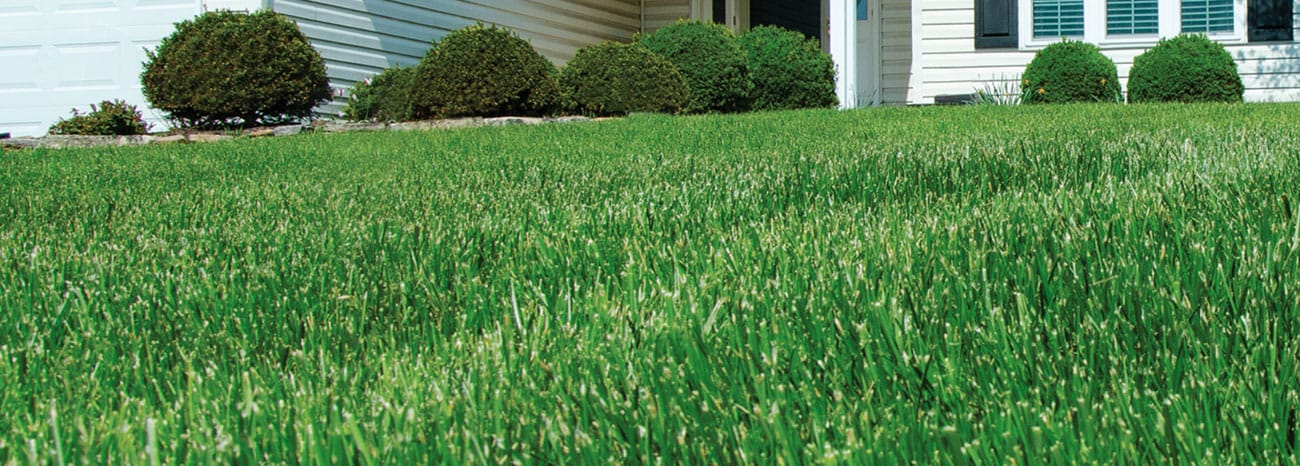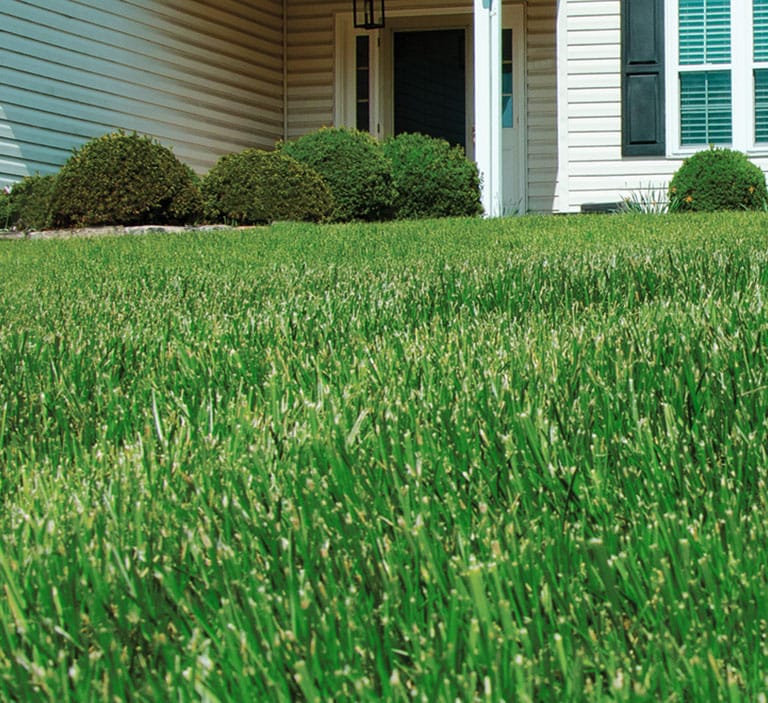Answer first: In southeast and central Pennsylvania, fertilize cool-season lawns four times—early April, late May, mid-August and mid-October—when soil is 55–65 °F. Warm-season lawns need only two feedings, in late May and mid-July.
2025 Fertilizer Calendar at a Glance
-
Early April | soil 55–60 °F – First cool-season feeding (about ¾ lb nitrogen per 1,000 sq ft) for spring green-up.
-
Late May | soil 60–65 °F – Second cool-season feeding and the first warm-season feeding; apply ½ lb N.
-
Mid-July | soil 70–75 °F – Second warm-season feeding; another ½ lb N keeps zoysia or bermuda thick through summer.
-
Mid-August | soil slipping back to 65 °F – Recovery feeding for cool-season turf after summer stress; again ¾ lb N.
-
Mid-October | soil 55–50 °F – Final cool-season application; 1 lb N is banked in roots for an early-spring green-up.
(Annual totals: cool-season lawns 3–3.5 lbs N; warm-season lawns 1–1.5 lbs N.)
Use a $15 soil thermometer or Penn State’s county soil-temperature map rather than the day of the month—weather swings can shift the schedule by a week or more.
Why Timing Beats Product Hype
Grass can only “eat” when it’s actively growing. Cool-season species such as Kentucky bluegrass thrive in 60–75 °F air temperatures, shut down in summer heat, then store carbohydrates once nights drop below 50 °F. Warm-season grasses flip that script, performing best above 80 °F and browning after the first frost. Feed outside those windows and you’re wasting money, risking nutrient runoff and giving weeds the edge.
Choosing the Right Fertilizer for PA Soils
-
Start with a soil test. Penn State Extension’s $10 kit pinpoints pH and nutrient gaps (potassium is often low east of the Susquehanna).
-
Match N-P-K to grass type.
-
Cool-season blends: 24-0-10 or similar, with 30–40 % slow-release nitrogen.
-
Warm-season blends: 16-4-8 to fuel stolon growth.
-
-
Decide on organic vs. synthetic. Organic products (composted poultry, Milorganite) boost microbial life and moisture retention—great for drought-prone shale soils, but slower to green. Synthetics green up fast for real-estate curb appeal; just watch your spreader setting.
Step-by-Step Application Guide
-
Measure your turf and calibrate the spreader. Know the exact square footage and match the setting on the bag.
-
Mow, then blow. Cut the lawn a day before and remove clippings so granules hit soil.
-
Confirm soil temperature. Probe three inches deep before 10 a.m.
-
Apply along the perimeter first, then walk straight passes with 50 % overlap to avoid skips.
-
Water immediately. Apply ¼–½ inch of irrigation to wash granules off blades and activate slow-release prills.
-
Sweep hard surfaces so stray granules don’t stain concrete or run into storm drains.
Common Pitfalls and How to Avoid Them
-
Fertilizing right before a thunderstorm
Heavy rain pushes nitrogen into storm drains and streams. Wait at least a full day after a major rain is forecast. -
Applying in early spring before soil hits 55 °F
You’ll get lush top growth with shallow roots and more disease. Trust the thermometer, not just the calendar. -
Over-applying quick-release fertilizer
More than 1 lb N per 1,000 sq ft at one time can scorch blades, build thatch and double your mowing workload. -
Using one-size-fits-all products
Cool-season and warm-season grasses have different nutrient needs. Read the label and match it to your turf type.
Environmental & Safety Essentials
-
Store bags in a locked, dry shed away from gasoline and other chemicals.
-
Wear nitrile gloves and eye protection; rinse off granules that touch skin.
-
Choose phosphorus-free blends unless your soil test shows a deficiency—Pennsylvania restricts P use on established lawns.
-
Keep a ten-foot unfertilized buffer next to streams and storm drains.
Frequently Asked Questions
Does my cool-season lawn really need four feedings every year?
For showcase color and the thickest turf, yes. Three feedings (April, August and October) still meet Penn State guidelines for basic health.
If I only fertilize once, when should I do it?
Mid-October. Autumn nitrogen is stored in roots and crowns, fueling an early-spring green-up without extra mowing.
Can I combine weed control and fertilizer?
Spot-spray broadleaf weeds at the right time for the herbicide you choose. “Weed-and-feed” combos rarely hit the best timing for both tasks.
How long should pets and kids stay off the lawn after application?
Until the grass is dry—usually after the post-application watering or overnight.
Ready for a Lawn That Screams “Moyer Green”?
Our agronomy-trained technicians create a treatment plan based on your soil test, apply pro-grade controlled-release products, and monitor between visits—so you can simply enjoy the view.


